

Union Pacific Railroad
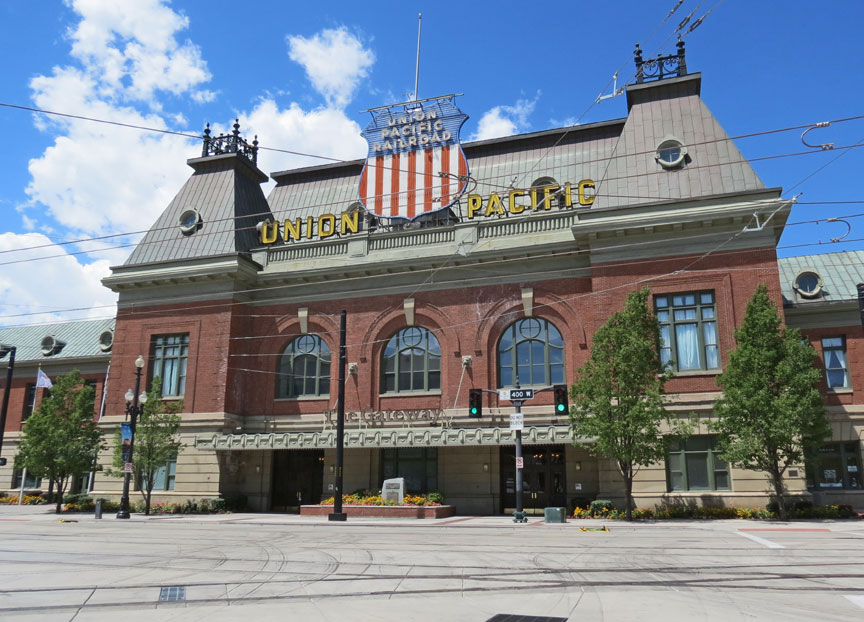
Union Pacific Station, Salt Lake City
The Union Pacific Railroad, headquartered in Omaha, Nebraska, is the largest railroad network in the United States. Union Pacific has more than 44,000 employees and operates more than 8,000 locomotives on 31,900 miles (51,338 km) of track across 23 states in the central and western United States, west of Chicago and New Orleans. The current chairman is James R. Young. Over the years, Union Pacific has purchased a large number of other railroads, notably the Missouri Pacific, Chicago and North Western, Western Pacific, Missouri-Kansas-Texas, and the Southern Pacific (including the Rio Grande). Currently, Union Pacific owns 26% of Ferromex while Grupo México owns the remaining 74%. Union Pacific's leading railroad competitor is the BNSF Railway, which covers much of the same territory in the United States.
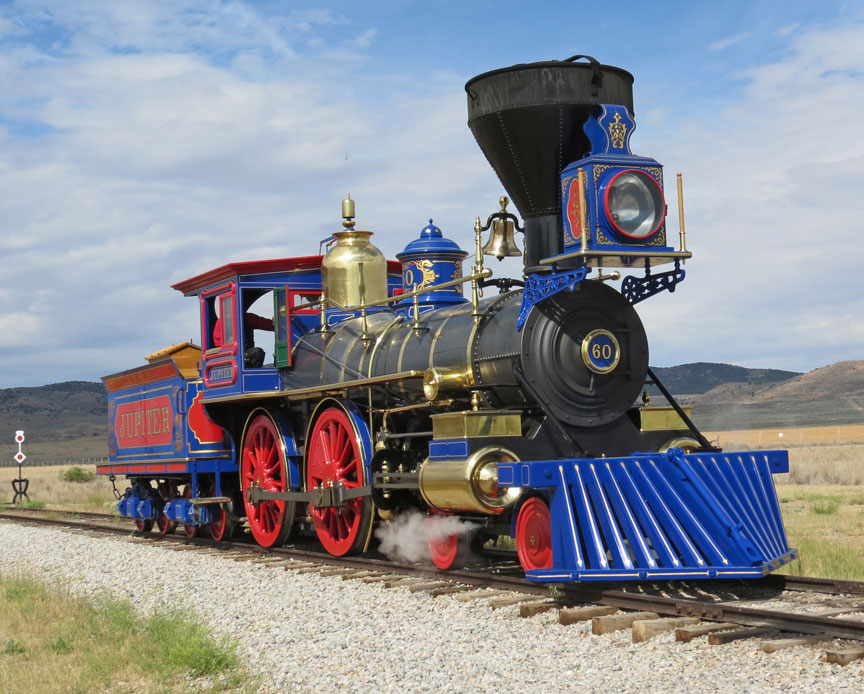
A replica of the Jupiter (CP # 60) at the Golden Spike National Historic Site
More
Photos of the Golden Spike National Historic Site
The original company, prior to later uniting with the Central Pacific Railroad, was incorporated on July 1, 1862 under an act of Congress entitled Pacific Railroad Act of 1862. The act was approved by President Abraham Lincoln, and it provided for the construction of railroads from the Missouri River to the Pacific as a war measure for the preservation of the Union. It was constructed westwardly from Council Bluffs to meet the Central Pacific line, which was constructed eastwardly from San Francisco Bay. The line was constructed primarily by Irish labor who had learned their craft during the recent Civil War.[4] The two lines were joined together at Promontory Summit, Utah, fifty-three miles west of Ogden on May 10, 1869, hence creating the first transcontinental railroad in North America. Under the guidance of its dominant stockholder Dr. Thomas Clark Durant, the namesake of the city of Durant, Iowa, the first rails were laid in Omaha, Nebraska. Subsequently, UP took over three Mormon-built roads: the Utah Central Rail Road extending south from Ogden, Utah, to Salt Lake City, the Utah Southern Railroad extending south from Salt Lake City into the Utah Valley, and the Utah Northern Railroad extending north from Ogden into Idaho; and it built or absorbed local lines that gave it access to Denver and to Portland, Oregon, and the Pacific Northwest. It acquired the Kansas Pacific (originally called the Union Pacific, Eastern Division, though in essence a separate railroad). It also owned narrow gauge trackage into the heart of the Colorado Rockies and a standard gauge line south from Denver across New Mexico into Texas (both parts of the Union Pacific, Denver and Gulf Railway).

The Last Spike
More Photos of the Last Spike ceremony
Directors of the Union Pacific Railroad gather on the 100th meridian, which later became Cozad, Nebraska, approximately 250 miles (400km) west of Omaha, Nebraska Territory, in October 1866. The train in the background awaits the party of Eastern capitalists, newspapermen, and other prominent figures invited by the railroad executives.

UP was entangled in the Crédit Mobilier scandal, exposed in 1872, that involved
bribing congressmen and stock speculations. Its early troubles led to bankruptcy
during the 1870s, the result of which was reorganization of the Union Pacific
Railroad as the Union Pacific Railway on January 24, 1880, with its dominant
stockholder being Jay Gould. The new company also declared bankruptcy, in 1893,
but emerged on July 1, 1897, reverting to the original name, Union Pacific
Railroad. Such minor changes in corporate titles were a common result of
reorganization after bankruptcy among American railroads. This period saw the UP
sell off some of its holdings; the Union Pacific Railway, Central Branch became
the Central Branch of the Missouri Pacific Railroad and the Southern Branch was
acquired by the newly incorporated Missouri Kansas Texas Railroad in 1870.
However, the UP soon recovered, and was strong enough to take control of
Southern Pacific Railroad (SP) in 1901 and then was ordered in 1913 by the U.S.
Supreme Court to surrender control of the same. UP also founded the Sun Valley
resort in Idaho in 1936, the UP engineering department in Omaha designed the
first ski chairlift that summer. The MP and MKT both came back into the UP fold
in the 1980s. On September 11, 1996 UP finally acquired SP in a transaction
envisioned nearly a century earlier.
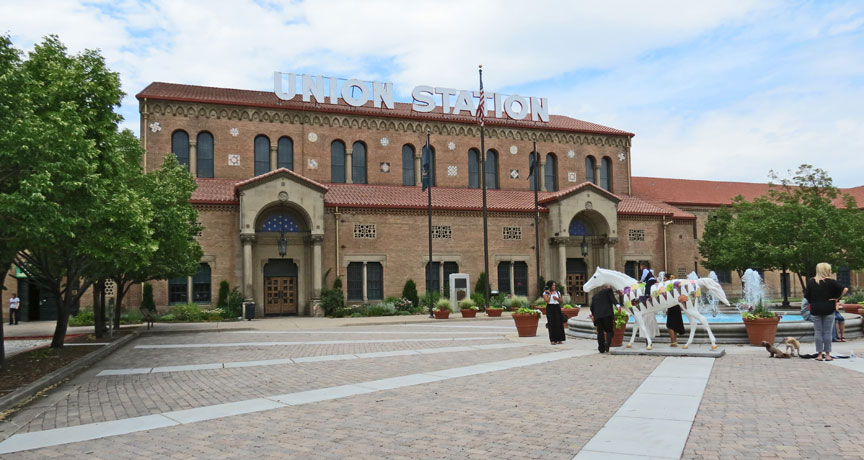
Union Pacific Station, Ogden, Utah
More Photos of Union Pacific Station
The headquarters of the railroad operation of the UP has been in Omaha, Nebraska, since its inception. Currently they are in the Union Pacific Center, completed in 2003. Other important UP facilities in Omaha have included the Union Pacific Railroad Omaha Shops Facility and the Harriman Dispatch Center. The corporate headquarters of the Union Pacific Corporation were located in New York City from its initial founding in the 1860s until Drew Lewis became CEO in the mid-1980s, when they were relocated to Bethlehem PA, and then later to Dallas TX; the corporate headquarters of the Union Pacific Corporation are now also in Omaha
Text from Wikipedia
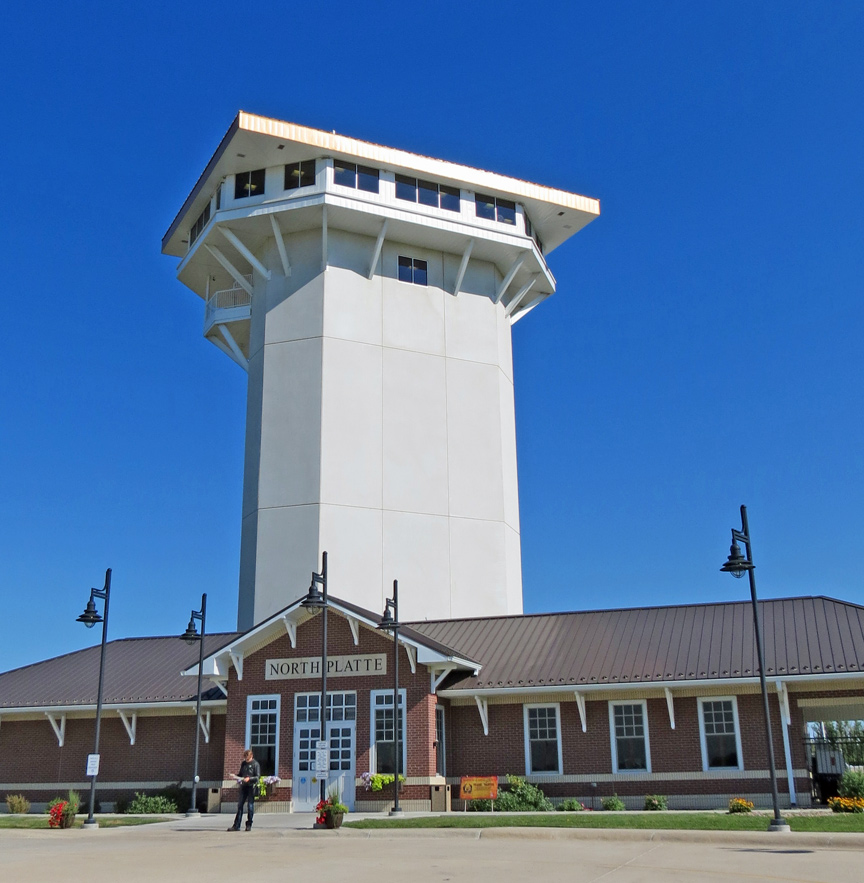
Golden Spike Visitors Center
North Platte is home to the world's largest rail yard, Bailey Yard. The Golden Spike Tower and Visitor Center is an eight-story building which overlooks the expansive railroad staging area. The tower and visitor center are open to the public year-round.
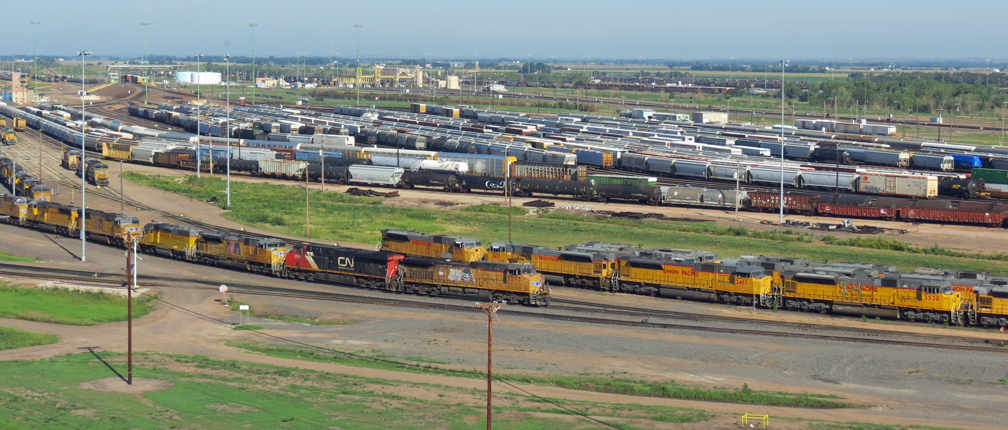
North Platte was the western terminus of the Union Pacific Railway from the
summer of 1867 until the next section to Laramie, Wyoming, was opened the
following summer. Even though Congress had authorized the building of the
Transcontinental Railroad in 1862, it was only extended as far as Nebraska City
by the start of the summer of 1867. The 275-mile section from Nebraska City to
North Platte was completed in less than six weeks.
Photos of the Union Pacific Bailey Yards
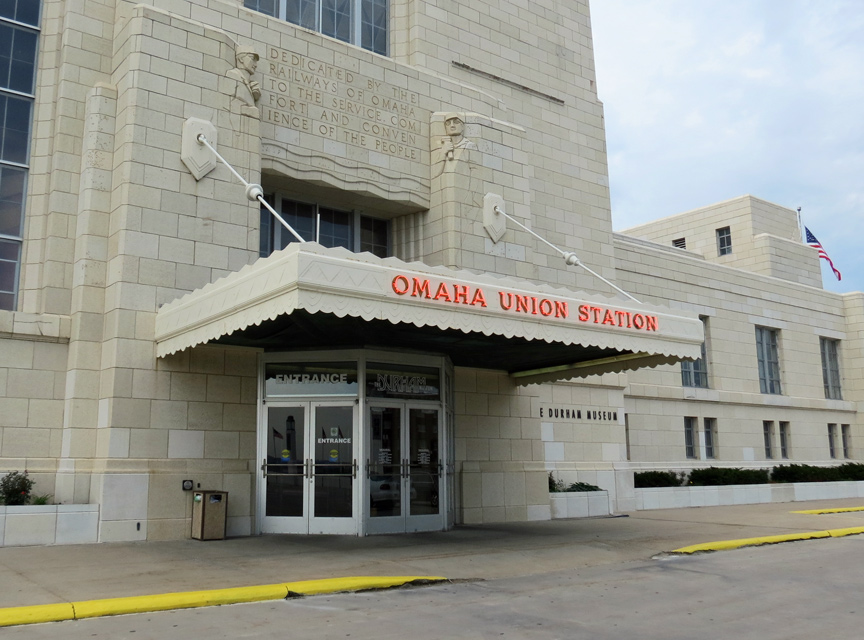
Omaha Union Station
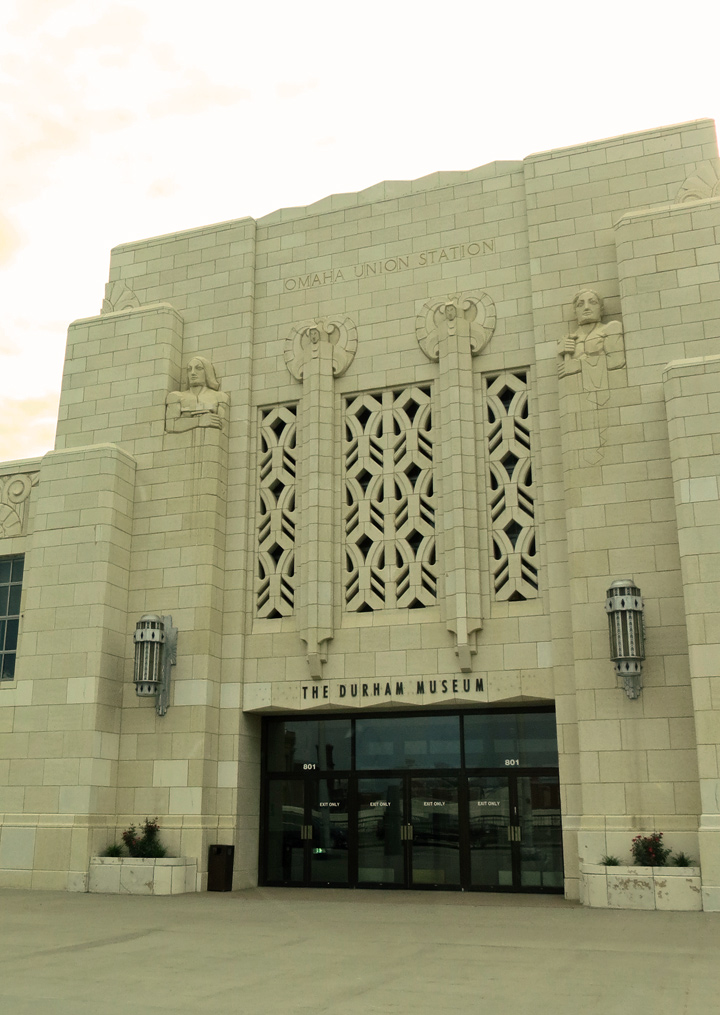
Durham Museum in the Omaha Union Station
Photos of the Union Pacific Station in Omaha